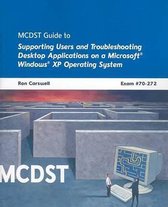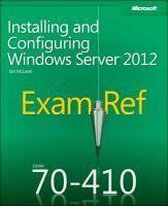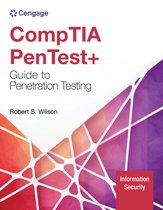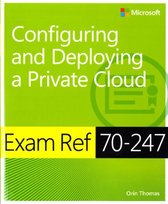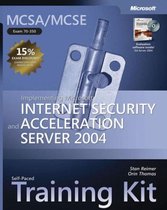Designing to FIPS-140 A Guide for Engineers and Programmers
Afbeeldingen
Sla de afbeeldingen overArtikel vergelijken
- Engels
- Paperback
- 9798868801242
- 26 april 2024
- 213 pagina's
Samenvatting
Although this was once a fairly niche topic, it is no longer so. Other industries—banking, military, healthcare, air travel, and more—have adopted FIPS certification for cryptographic products. The demand for these services has grown exponentially. Still, the available skills pool has not grown. Many people are working on products with zero usable information on what to do to meet these standards and achieve certification or even understand if such certification applies to their products.
What You Will Learn
- What is FIPS-140? What is the SP800 standard?
- What is certification? What does it look like? What is it suitable for?
- What is NIST? What does it do?
- What do accredited certification labs do?
- What do certification consultants do?
- Where and when is certification required?
- What do FIPS-140 modules look like?
- What are the sub-components of FIPS-140 modules (RNGs, PUFs, crypto functions)? How does certification work for them?
- What are the physical primitives (RNGs, PUFs, key stores) and how do you handle the additional complexity of certifying them under FIPS?
- What are the compliance algorithms (AES, SP800-90 algos, SHA, ECDSA, key agreement, etc.)?
- How do you design for certification (BIST, startup tests, secure boundaries, test access, zeroization, etc.)?
- How do you get CAVP certificates (cert houses, ACVTs)?
- How do you get CMVP certifications (cert houses, required documents, design information, security policy, etc.)?
This book provides detailed and practical information for practitioners to understand why they should choose certification. It covers the pros and cons, and shows how to design to comply with the specifications (FIPS-140, SP800 documents, and related international specs such as AIS31, GM/T-0005-2021, etc.). It also covers how to perform compliance testing. By the end of the book, you will know how to interact with accredited certification labs and with related industry forums (CMUF, ICMC). In short, the book covers everything you need to know to make sound designs.
Although this was once a fairly niche topic, it is no longer so. Other industries—banking, military, healthcare, air travel, and more—have adopted FIPS certification for cryptographic products. The demand for these services has grown exponentially. Still, the available skills pool has not grown. Many people are working on products with zero usable information on what to do to meet these standards and achieve certification or even understand if such certification applies to their products.
What You Will Learn
- What is FIPS-140? What is the SP800 standard?
- What is certification? What does it look like? What is it suitable for?
- What is NIST? What does it do?
- What do accredited certification labs do?
- What do certification consultants do?
- Where and when is certification required?
- What do FIPS-140 modules look like?
- What are the sub-components of FIPS-140 modules (RNGs, PUFs, crypto functions)? How does certification work for them?
- What are the physical primitives (RNGs, PUFs, key stores) and how do you handle the additional complexity of certifying them under FIPS?
- What are the compliance algorithms (AES, SP800-90 algos, SHA, ECDSA, key agreement, etc.)?
- How do you design for certification (BIST, startup tests, secure boundaries, test access, zeroization, etc.)?
- How do you get CAVP certificates (cert houses, ACVTs)?
- How do you get CMVP certifications (cert houses, required documents, design information, security policy, etc.)?
Who This Book Is For
Hardware and software engineers or managers of engineering programs that include any form of cryptographic functionality, including silicon vendors, library vendors, OS vendors, and system integrators
Productspecificaties
Inhoud
- Taal
- en
- Bindwijze
- Paperback
- Oorspronkelijke releasedatum
- 26 april 2024
- Aantal pagina's
- 213
Betrokkenen
- Hoofdauteur
- David Johnston
- Tweede Auteur
- Richard Fant
- Hoofduitgeverij
- Apress
Overige kenmerken
- Editie
- 24001
- Product breedte
- 178 mm
- Product lengte
- 254 mm
- Studieboek
- Nee
- Verpakking breedte
- 178 mm
- Verpakking hoogte
- 13 mm
- Verpakking lengte
- 254 mm
- Verpakkingsgewicht
- 445 g
EAN
- EAN
- 9798868801242
Je vindt dit artikel in
- Boek, ebook of luisterboek?
- Boek
- Taal
- Engels
- Nieuw verschenen
- Nieuw verschenen
- Studieboek of algemeen
- Studieboeken
Kies gewenste uitvoering
Prijsinformatie en bestellen
Rapporteer dit artikel
Je wilt melding doen van illegale inhoud over dit artikel:
- Ik wil melding doen als klant
- Ik wil melding doen als autoriteit of trusted flagger
- Ik wil melding doen als partner
- Ik wil melding doen als merkhouder
Geen klant, autoriteit, trusted flagger, merkhouder of partner? Gebruik dan onderstaande link om melding te doen.

